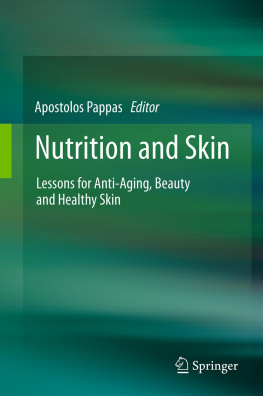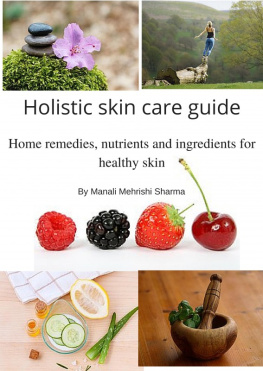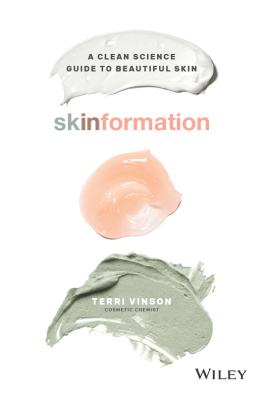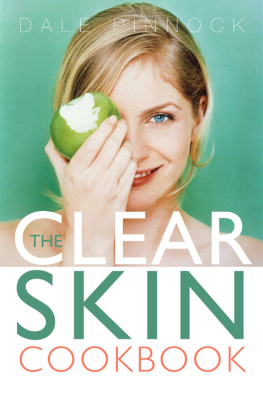Apostolos Pappas (ed.) Nutrition and Skin Lessons for Anti-Aging, Beauty and Healthy Skin 10.1007/978-1-4419-7967-4_1 Springer Science+Business Media, LLC 2011
1. Introduction and Overview
Throughout history, our traditions, anecdotal evidence, epidemiological studies, and most recently clinical studies have reflected the idea that nutrition is associated with health, beauty, and graceful aging. Multiple pathways and cofactors are implicated in skin biology, and certain common skin conditions have been shown to be critically affected by nutritional patterns and habits.
Linking food and good nutrition to overall health and appearance is important to the modern consumer. It seems that everyone, from the youngest to the oldest consumer, is very much aware of his or her appearance. It is instinctual that food and wellness are closely associated, and skin is the only organ that is tightly associated with the desirable appearance. Skin is the largest organ of the human body and plays a role in thermoregulation, protection, metabolism, and sensation. Various nutrients are fundamental for normal skin functions, and their presence and function still intrigue many scientists.
The early part this book explores the relations of the most important and essential nutrients with skin. Why are they the most important and essential (together)? These two terms have harmoniously coinhabited books of nutritional research. The term essential has been used mainly to denote nutrients that the human body cannot synthesize and relies on dietary sources to provide; they include, for example, vitamins, essential fatty acids, and amino acids as well as many bioactive agents with beneficial pharmacological activity that belong to the wide category of nutraceuticals.
Zouboulis and Elewa recap the essentiality of vitamin A for normal differentiation and maintenance of epithelial tissues in skin and mucous membranes. They comprehensively review the multiple activities of retinoids (metabolites of vitamin A) that are used as therapeutic agents for various skin diseases. They discuss the essential aspects, including the profound management of these potent agents.
Reichrath and Trmezaygues undertook the enormous task of discussing the multifaceted roles of vitamin D and its biologically important metabolites. The studies are numerous, but the authors have carefully reviewed them for this chapter, summarizing the positive effects of vitamin D and its analogues in a variety of skin diseases.
Burke eloquently reviews the photoprotection that vitamins C and E offer against induced photodamage. Their activities are conversed in full spectrum, covering both topical and oral use. Their synergies with other antioxidants are discussed in detail.
Richelles team powerfully compiled information on the most studied antioxidants in skin research to date, the carotenoids. They have accurately and carefully elaborated on important issues such as their bioavailability and their protective role against solar ultraviolet damage; a role that may significantly complement the use of sunscreens and overall contribute extensively to skin health.
Lademanns team complements successfully the rest of the vast range of antioxidant activities and their observed benefits to skin, revealing in addition ways to assess their important activities. The nature of free radical scavengers is discussed in detail, especially in regard to how they reflect both the lifestyle and the physical condition of people.
Petra Winkler excels in her difficult task to review and focus on the knowledge currently available on several minerals and their impact on the skin. The focus on the deficiencies of certain minerals is discussed together with their association with many skin diseases.
Finally, Boyle and colleagues offer a powerful message on the beneficial and perplexing relation of probiotics and skin with a complete review of the published clinical research. Many manuscripts loosely associate our microbiota to health. Boyles team focus on the factsusing direct evidence of their beneficial effects on skin. Also, a special focus on eczema prevention and an additional call for further studies is outlined.
The latter part the book focuses on the clinical crossover between nutrition and dermatology. There is a strong need to expand this knowledge and an urgent wish to see it enriched and more powerful in the near future.
The first topic discussed in this portion of the book is how nutrition may play a role in acne. Many nutritional factors are discussed especially essential nutrients and dairy products. Also addressed is the need for more proper clinical studies that would help elucidate the relation between diet and acne. So far, only studies that examined the high glycemic index and load have been able to establish a valid relation between diet and acne. Thus, in the next chapter Larsen (Smith) discusses her pioneering studies on the relation of the glycemic load and acne symptoms through improvements in insulin metabolism.
Consequently, Rawlings distills years of experience into a chapter that addresses atopic dermatitis as it relates to nutrition, with a focus on essential fatty acid metabolism. Stratum corneum health, especially its skin barrier function, is discussed in relation to its deficiencies due to essential fatty acids. These results and intervention studies with these fatty acids are summarized.
Anthonavage identifies, with detail and depth, research areas unchartered by nutritionists and food scientists with respect to hair biology. As the fundamental element of beauty and noticed appearance, hair encapsulates a range of factors and information that relates to nutritional status and metabolic activities.
Stamatas and Kollias, in a comprehensive summary, capture the enormous potential that are available to scientists and health professionals in the form of imaging and spectroscopic techniques. These innovations can be employed to assess the presence and amount of certain nutrients directly in the skin.
The circle closes with another chapter by Zoubouliss team, who undertook the extensive task of summarizing the nutritional clinical studies in dermatology. Nutritional supplementation, caloric content and composition, nutritional imbalances, hyperinsulinemia, and important nutrients are summarized in relation to characteristic skin pathologies, skin metabolism, skin physiology, and skin properties.
My hope is that this publication bridges a gap in scientific knowledge and encourages food science and nutritional professionals to view dermatological research with a new perspective. It is also hoped that it will inspire new research and product development to help with more efficient decisions by todays highly anticipating consumer.
May this book be an asset not only for the food scientist, nutritionist, and dermatologist but also any scientist who has a pathos for food, nutrients, and metabolic research. I hope it will be the cornerstone for more books to come on this subject and, more importantly, more studies to be done in this new field. Furthermore, it is my hope that it will bridge the gap between the two disciplines.









